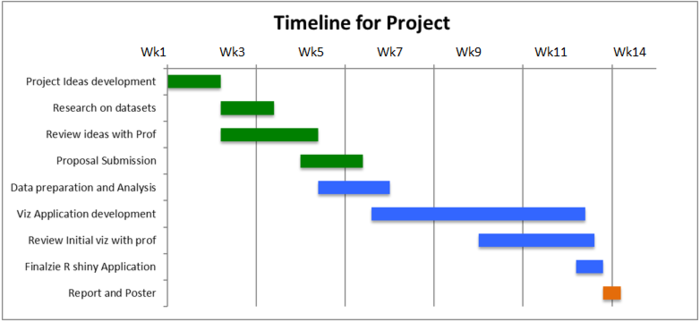Difference between revisions of "Group18 Proposal"
Alagua.2017 (talk | contribs) |
Alagua.2017 (talk | contribs) |
||
| Line 71: | Line 71: | ||
</p> | </p> | ||
<h1><span class="mw-headline" id="Approach"><div style="background: #ffffff; padding: 17px; line-height: 0.1em; text-indent: 2px; font-size:17px; font-family: verdana; border-left:8px solid #008080"><font color="#000000"><b>Approach</b></font></div></span></h1> | <h1><span class="mw-headline" id="Approach"><div style="background: #ffffff; padding: 17px; line-height: 0.1em; text-indent: 2px; font-size:17px; font-family: verdana; border-left:8px solid #008080"><font color="#000000"><b>Approach</b></font></div></span></h1> | ||
| − | We will be taking the following approach as part of our analysis: | + | We will be taking the following approach as part of our analysis: Data Cleaning, Data Preparation, Visualization , Analysis and Insights. |
We will be using JMP Pro , Excel and R for the data cleaning and data preparation suitable for our analysis. For the visual analysis we will be using Tableau and R. Some of the R packages that we will be using are : | We will be using JMP Pro , Excel and R for the data cleaning and data preparation suitable for our analysis. For the visual analysis we will be using Tableau and R. Some of the R packages that we will be using are : | ||
<ul> | <ul> | ||
Revision as of 13:57, 21 June 2018
Crime and Society : The new age of offence in India
|
|
|
|
|
|
|
Contents
Introduction
With increase in urbanization and globalization, crime rate across societies in the world is increasing day by day. Technology advancement is also cited as a reason for increasing crime rates. The rise in crime is viewed as a matter of major concern to any society. It is therefore necessary for the government to take necessary measures to reduce or prevent it. There are various forms of crime such as murder, rape, abduction, drug trafficking, prostitution, sexual harassment, and many more.
India is one of the countries in the world with high crime rates. There were 2.97 million crime cases reported in India in 2016 which is increase of 382% as compared to 6,01,964 crime cases reported in 1953. These numbers are however not accurate as many crime cases goes unreported due to reason such as fear, financial status, and long court proceedings. Crime against women including sexual harassment, rape, trafficking of women, child marriage, domestic violence, and female infanticides are most common crimes in India. The National Crime Records Bureau stated in one of its reports that 56 percent of crimes in India are committed by people in age group of 16 – 25 years. According to report released by Global Peace Index in 2017, India is ranked fourth most dangerous country for women travelers. Above statistics highlights the urgent need for government to ensure proper law and order situation in the country. This is necessary in order to improve the overall image of India among foreign travelers who are interested in visiting and exploring India.
We want to leverage on visual analytics capabilities to understand distribution and patterns of different crimes across India at district level. We also intend to supplement National Crime data with other external information such as census information to better understand crimes within India.
Dataset Description
Data is about various aspects of crimes happened in India from 2001 -2014.Crime incident reports are provided by National Crime Records Bureau(NCRB) to document the reported cases of crime as defined by the Indian Penal Code.The districts are police districts and also include special police unit. Therefore, these may be different from revenue districts. Most of the data is from 2001 to 2010. But there are few files which has data only from 2011 and few are having 2001-14.
Indian socioeconomic data, has been extracted from Government of India Census 2001 and includes data of 590 districts, having around 50 variables that describe everything from population distribution on the basis of gender, occupation, religion, literacy, sex ratio and educational facilities. It serves as an exhaustive database to understand the demography of a diverse nation in the world.
Key Objectives
The main objectives of the project that we will focus our analysis on are as follows:
- Crime Pattern Detection – Spatial analysis of crime data to identify the hot Spots/high density crime areas by hierarchical level of States and Districts
- Time series analysis of crime data over 10 years to analyze the pattern in the crime rate
- Association Rule Mining among different categories of crimes using spatial distribution
- The 80-20 rule analysis - A small proportion of places, offenders, victims, and property account for most of the crime
- Correlation analysis of social factors and crime rates, since normally socioeconomic factors could be the reason for committing crimes like theft, burglary and kidnapping
Approach
We will be taking the following approach as part of our analysis: Data Cleaning, Data Preparation, Visualization , Analysis and Insights. We will be using JMP Pro , Excel and R for the data cleaning and data preparation suitable for our analysis. For the visual analysis we will be using Tableau and R. Some of the R packages that we will be using are :
- Dplyr
- ggmaps
- ggplot2
- Readr
- Shiny , Shinythemes
Project Schedule
Expected Challenges
- Consistent Data : As the type of crimes is not uniform for all the years in the data, there is a need of data cleaning and preparing the data suitable for the visualization.
- Accurate Analysis : The socio-economic India census data is available over the year 2010 , so the data needs to be prepared for the year 2010 for accurate data analysis across different districts to enable visualize the crime pattern in India.
References
- Complete Information about the dataset Crime in India : https://www.kaggle.com/rajanand/crime-in-india
- Indian Government Data 2016 crime rate Statistics : https://data.gov.in/catalog/crime-india-2016
